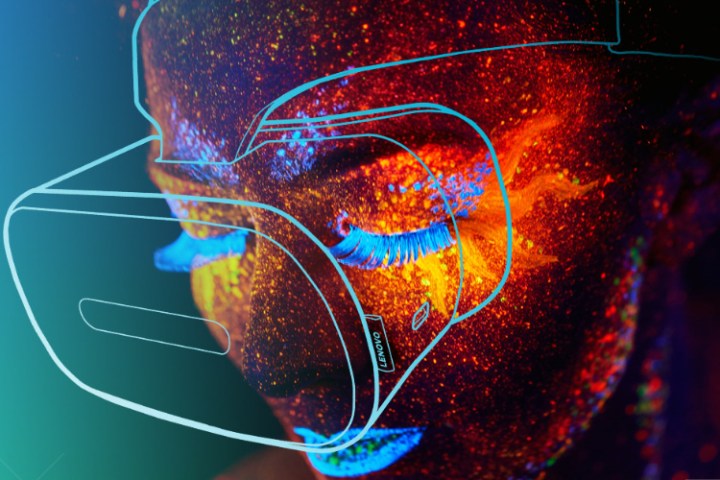
Google revealed HTC and Lenovo as its two main partners producing Daydream-based VR headsets during its developers conference earlier this year. Since then, HTC has jumped ship to “focus” on a similar Google-free stand-alone VR headset sold exclusively in China. Meanwhile, Lenovo’s version remained in development limbo with no release date in sight. Now, at least, we have a name and a possible release window.
The upcoming Android-powered headset will be based on a reference design created by Qualcomm. The big selling point is that it incorporates Google’s WorldSense technology, which doesn’t require external sensors to track the position of your head. The means you can move through physical space to fully interact with the virtual environment without all the wiring associated with desktop-tethered VR headsets.
Of course, in the virtual realm, you can’t see where objects and people reside in physical space. That’s where the “world sense” aspect comes in: The technology maps your current environment, so the headset knows where people are sitting, the location of furniture, and so on. With PC-based headsets like the HTC Vive, owners must manually establish a static “play area” during the setup process, and there’s no object detection.
The Mirage Solo will be a different VR headset than what Lenovo currently offers for Windows 10. Released in October, the $300 Explorer is a “Windows Mixed Reality” headset that requires a compatible Windows 10-based PC, connecting to its HDMI and USB ports using a 13-foot cable. But similar to the stand-alone unit, Lenovo’s PC-based VR headset doesn’t require external sensors to track movement although its not using Google’s WorldSense technology.
Qualcomm’s current stand-alone VR headset reference design is based on the Snapdragon 835 mobile processor. The kit includes an integrated digital signal processor to free up the main processor and graphics cores, an AMOLED display with a 2560 x 1440 resolution, head-tracking cameras, 3D positional audio, and more.
But given that Qualcomm just introduced the Snapdragon 845 chip at the beginning of December, the Mirage Solo would essentially be an outdated device if it lands on the market this spring packing the older Snapdragon 835 chip. Product testing began on September 1 and concluded on December 7, so the device could rely on either chip at this point.
The Mirage Solo’s appearance on the FCC indicates it passed specific tests for Wireless AC and Bluetooth 5.0 connectivity. The only “diagram” revealed in the documents is a basic two-second illustration: A rounded rectangle and two circles for the headset, and a larger, single circular for the head strap. This diagram simply shows where Lenovo must place the FCC label.


